
Affordable DIY Patio Paver Designs for Outdoor Spaces
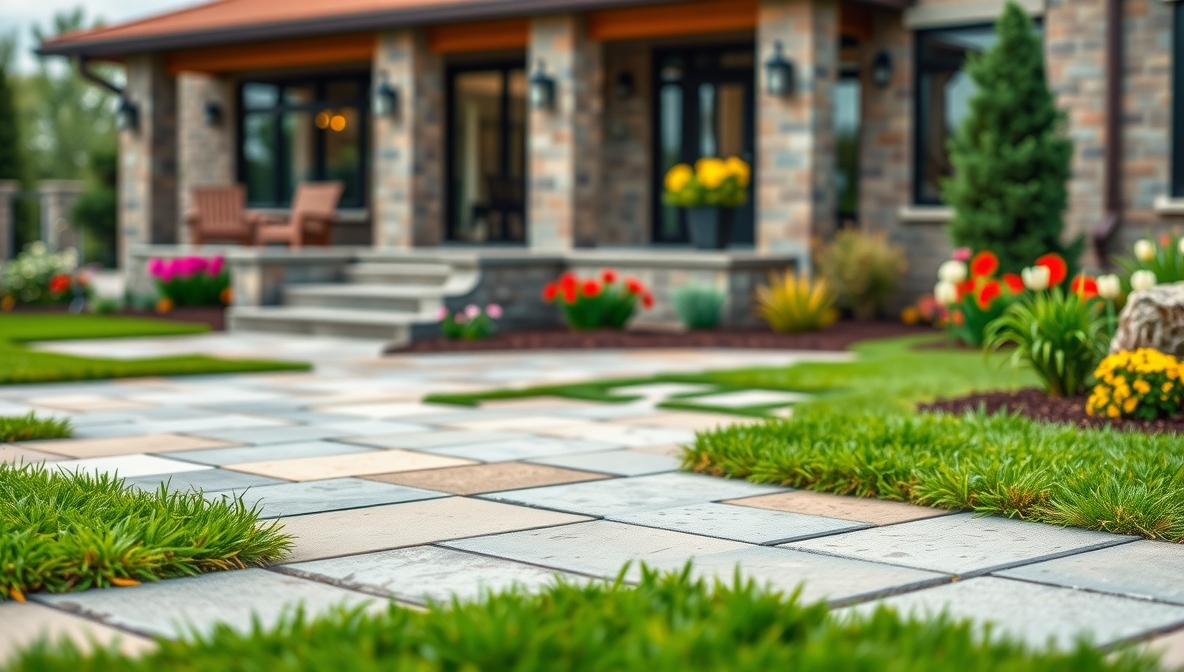
A great outdoor space doesn’t need a big budget to look beautiful. With a little creativity and the right materials, a simple patio can become a backyard standout. Pavers offer one of the easiest ways to add style, texture, and function to an outdoor area without spending a fortune. The trick lies in smart design choices and cost-effective materials that still pack visual punch.
Gravel, reclaimed bricks, concrete molds, or mismatched stone slabs can all become part of an eye-catching patio layout. Each of these materials brings a distinct personality to a space, especially when arranged in patterns or combined with inexpensive accents like mulch or grass. Repurposed items from salvage yards or local classifieds often hide hidden gems perfect for outdoor projects.
A well-planned layout adds structure and beauty, while low-cost borders or DIY edging help tie everything together. Even small patios can shine with the right touch, proving that high-end results don’t always come with high-end prices. Creativity stretches dollars further than most expect. Explore some of the most clever and affordable paver patio ideas below—your next weekend project might be more doable than it seems.
Table of Contents
ToggleDIY Cheap Patio Paver Ideas
A patio is a great way to make your outdoor space more useful and inviting. You don’t need a big budget to build one. With a little creativity and effort, you can build a patio with pavers that looks great and doesn’t cost much. Below are 10 budget-friendly patio paver ideas. Each one is simple, practical, and easy to follow.
1. Concrete Paver Grid with Gravel Fill
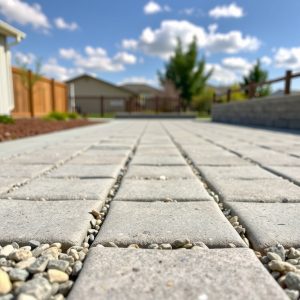
Lay square or rectangular concrete pavers in a grid pattern. Leave space between each paver, around 2 to 4 inches. Fill the gaps with small gravel, pebbles, or crushed stone. This gives a modern look and saves on material costs.
You can get concrete pavers from any hardware store. Choose light or dark gray for a neutral tone. Gravel comes in many colors, so match it with your outdoor furniture or garden theme.
This layout needs little digging. A flat surface and some basic leveling are enough. Perfect for renters or small yards.
2. Recycled Brick Pattern
Use old bricks from demolition sites or salvage yards. Lay them in patterns like herringbone, basketweave, or simple rows. Bricks give a warm, rustic feel. They’re also easy to work with.
Clean the bricks before use. Mix and match colors for a unique look. Use sand or gravel as a base, then compact everything in place.
This option is both cheap and eco-friendly. It also adds history and charm to your patio.
3. Stepping Stones in Grass
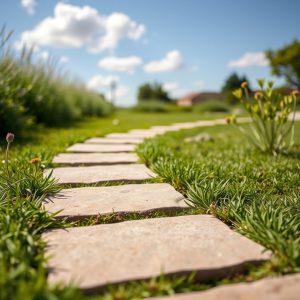
Place large flat stones directly onto your lawn. Arrange them in a path or circle to create a sitting area. The green grass between the stones adds color and softness.
Use irregular natural stones like slate or flagstone. These are easy to find at garden centers. No need to cover the whole space. Just set enough stones for chairs and a table.
This idea is perfect for small patios and easy weekend projects.
4. Wood and Concrete Combo
Mix concrete pavers with wood planks. Place them side by side or in a checkerboard design. This combo brings warmth from the wood and strength from the concrete.
Use treated wood to prevent rot. You can stain it to match your home. Keep a level base and space each section evenly.
This style works well for modern homes and costs less than full wood or stone patios.
5. Painted Concrete Pavers
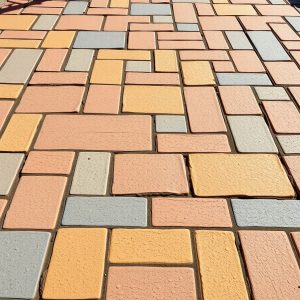
Buy cheap concrete pavers and paint them. Use outdoor floor paint or masonry paint. Try solid colors, geometric shapes, or stencil patterns.
Before painting, clean and dry the pavers. Use painter’s tape for clean lines. After painting, seal the surface to protect it from weather.
This method lets you add color and design without spending much. It also gives old pavers a fresh look.
6. Pea Gravel Patio with Stone Edging
Fill a space with pea gravel and use large stones or bricks as a border. This is one of the cheapest patio options. Gravel is affordable and easy to spread.
Outline the patio area with a rope or garden hose. Dig down 2 to 3 inches. Add landscape fabric to stop weeds. Fill with pea gravel and level it. Place edging stones around the sides.
You get a soft, natural look that’s great for relaxing or eating outside.
7. Crushed Stone and Paver Mix
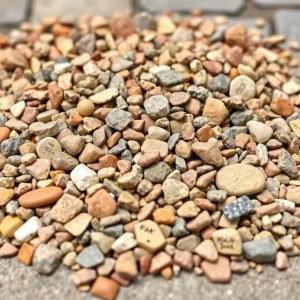
Use crushed stone as the main surface and place pavers as stepping stones or design features. This adds texture and breaks up the space.
Choose pavers in different shapes or colors. Space them out like a path or use them to form a circle or border.
Crushed stone is low cost and easy to install. It’s also great for drainage, making it ideal for rainy areas.
8. Patterned Mosaic Pavers
Make a mosaic using broken tiles, leftover ceramics, or small stones. Use them to decorate the top of concrete or brick pavers.
Arrange pieces into shapes, flowers, or even names. Stick them down with tile adhesive and fill the gaps with grout. Let it dry fully before placing the paver.
This is a great idea for artistic people. It adds color and character to the patio.
9. Sandstone Slab Patio
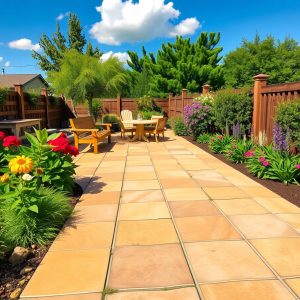
Sandstone slabs are usually cheaper than granite or slate. They come in earth tones like tan, brown, and gold.
Lay them on a sand base and tap each slab into place. Keep the surface level. Fill the joints with fine sand or gravel.
This kind of patio feels natural and warm. It’s also durable and blends well with gardens.
10. Pallet Wood Pavers
Repurpose old wooden pallets. Cut the boards into equal-sized planks. Arrange them in rows or patterns on a solid base like gravel or concrete blocks.
Treat the wood with sealant to protect it from water. Sand any rough edges. You can also stain or paint it to match your style.
This is one of the cheapest ways to build a deck-like patio. Great for small areas or renters.
FAQs
What is the cheapest way to build a patio with pavers?
Using gravel or sand as the base and simple concrete pavers is often the cheapest way. Painted or repurposed materials like bricks or pallet wood also cut costs.
Do I need to dig before laying pavers?
Yes, a little digging helps. Removing 2 to 3 inches of soil makes space for the base materials. It keeps the patio level and helps with drainage.
Can I build a patio without cement or mortar?
Yes. Dry methods using sand, gravel, or stone dust are very common. They are easier and cheaper to install.
How do I keep weeds from growing between pavers?
Use landscape fabric under the patio and fill gaps with polymeric sand or gravel. You can also spray vinegar or boiling water on weeds.
Is gravel safe for kids or pets?
Yes, but use small, smooth gravel like pea gravel. Avoid sharp stones. Keep an eye on children to prevent choking.
How long will a DIY patio last?
With the right base and materials, a DIY patio can last 10 to 20 years. Regular care helps it last longer.
Conclusion
Building a patio doesn’t need to cost a lot. You can make a beautiful outdoor space using simple and cheap materials. Try concrete pavers, bricks, gravel, or even wood. Mix colors, patterns, and textures to match your style. Most of these ideas need basic tools and little skill. Start small, stay creative, and enjoy your new patio without spending much.
